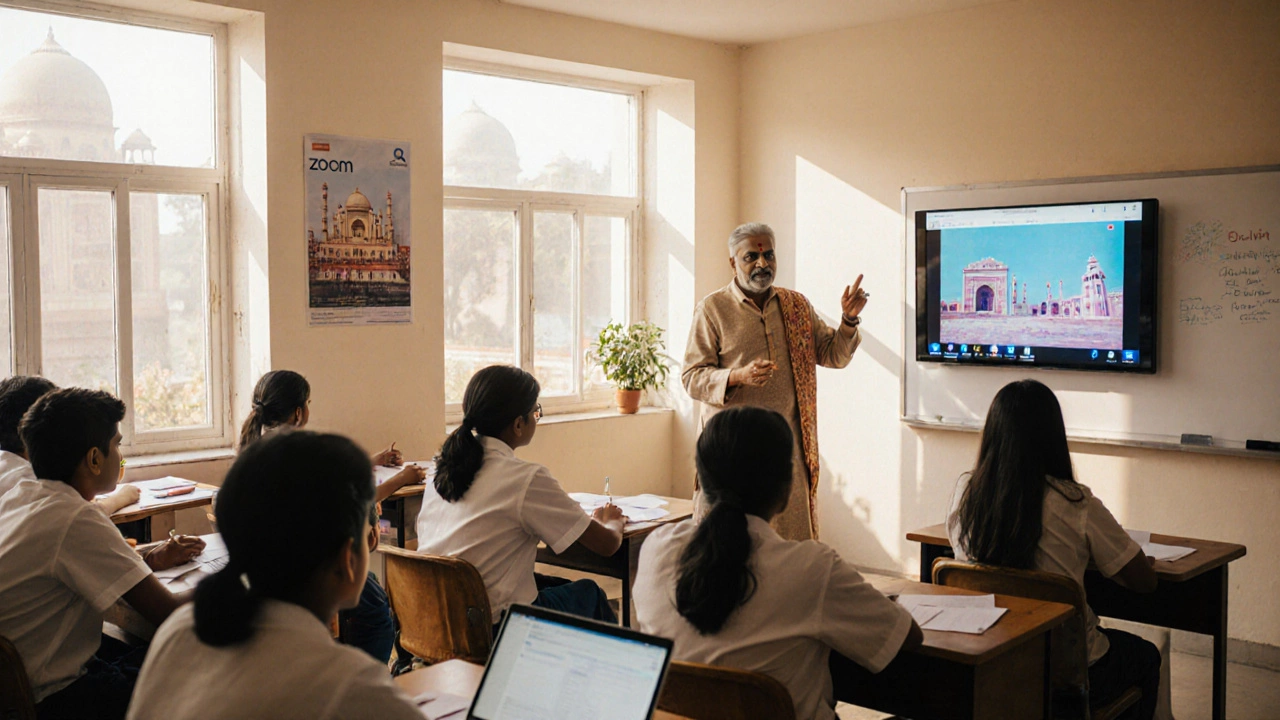Zoom for Education: How to Make Online Classes Work
Zoom has become a go‑to tool for teachers and students across India. Whether you’re running a single lecture or a full‑day workshop, the platform can stay simple or get complex fast. The goal is clear: deliver content without losing the human touch. Below are quick, practical steps to set up, run, and improve your Zoom sessions.
Set up a classroom that feels real
Start by creating a recurring meeting. Use your school’s email address so the link stays consistent and you avoid mixing personal and academic sessions. Turn on the "waiting room" feature – it lets you admit students one by one, giving you control over who joins and when. Enable "mute participants on entry" to silence background noise before you begin.
Next, tidy up your background. A plain wall or a virtual background with the school logo looks professional and reduces distractions. Test your audio and video before the first class; a 30‑second check helps you catch echo, low volume, or lighting problems early.
Keep students engaged
Live lectures can drift into monotony. Break the flow every 10‑15 minutes with a poll, a quick quiz, or a "raise hand" question. Zoom’s built‑in polling tool lets you launch multiple‑choice questions without leaving the meeting. Students love seeing real‑time results, and you get instant feedback on whether they understood the concept.
Use the "breakout rooms" feature for small‑group work. Assign groups based on project topics or skill levels, then give each room a clear task – for example, solve a math problem or draft a short paragraph. After 5‑10 minutes, bring everyone back to discuss findings. This mimics classroom discussions and keeps participation high.
Record the session for students who miss class or need a review. When you hit "Record", choose "Save to the cloud" so the video is automatically processed and a shareable link is generated. Share the link via your class’s WhatsApp group or LMS within a day, and add timestamps for key sections.
Finally, set clear expectations. Tell students to keep cameras on when speaking, use the "chat" for questions, and raise their hand before unmuting. A short "classroom rules" slide at the start of each session reinforces these habits.
Zoom isn’t just a video call; it’s a flexible learning hub. By tweaking settings, planning interactive moments, and using recordings wisely, you can turn a simple screen into a vibrant classroom. Try one new feature each week – a poll, a breakout, or a whiteboard – and watch your students respond positively. Happy teaching!
Sep
27

- by Dhruv Ainsley
- 0 Comments
Is Zoom an eLearning Platform? Pros, Cons & Comparison
Explore whether Zoom qualifies as an eLearning platform, compare its features with dedicated LMSs, and discover real‑world classroom use cases.